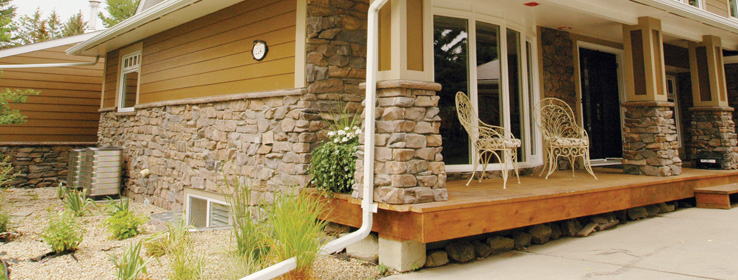When it comes to exterior color choices for dwellings, where do the rights of private property owners end and those of the neighborhood begin?
"My house is me and I am it. My house is where I like to be and it looks like all my dreams." This Daniel Pinkwater sentiment is posted outside Giovanna Tanzillo's house in Piedmont, Calif.
The sign makes perfect sense once you see this house; it's quite the showstopper in brilliant shades of orange with violet and fuchsia accents. Perched prominently on a corner, it's impossible to miss as you head into Piedmont's conservative neighborhood of upscale, historically pedigreed homes. I pass by it all the time, and it has always intrigued me.
As one might imagine, the house is quite polarizing when it comes to this debate: Where do the rights of private property owners end and those of the neighborhood begin?
In Piedmont, you'd be hard-pressed to find hues more vibrant than grays, blues and earth tones. Surprisingly, there is no city planning law or homeowners' association restricting or dictating the color choices of homes in this neighborhood. It's as though there's an unspoken agreement among the homeowners to keep things understated and dignified. Well, with the exception of Tanzillo's landmark.
It all started with a leaky porch roof. But why just patch a roof when you can turn it into a bold design statement? When Tanzillo hired Ace Architects to do the repair, their home remodel proposal was humorous, creative and modestly priced. Not only did Tanzillo love it, she took the proposal one step further by challenging the firm to go to town with the exterior color scheme. The Ace Architect color palette took its twin inspiration from Italian homes of the late 1800s, as well as the vivid color choices of the Oakland-based Society of Six, an association of six young California artists from the 1920s known for their fresh, exuberant and direct style of painting.
The Piedmont Planning Commission doesn't regulate color as a general rule, so Tanzillo's new construction had only to match the existing architecture. Assistant City Planner Kevin Jackson says the Commission found the whimsy of the project enticing, so enthusiastically approved her plans. "Change of any kind always causes comments," Jackson explains, "until people get acclimated."
As soon as the paint began going up, the reactions started rolling in. Nasty messages arrived from shocked and appalled neighbors telling Tanzillo to "move someplace where there are more hippies" and asking her "what are you thinking?!" There were even threats made to place a "color ordinance" on the ballot. I must admit I, too, was initially skeptical. The colors were in complete contrast to the surrounding homes and made it stick out like a sore thumb.
Tanzillo's house color choices drive this debate: If you move into a traditional neighborhood, should you respect and conform to its overall look? Does our society support self-expression, or are we afraid of change? In a topical post on my blog, Hue, a reader commented, "I firmly believe that part of what guides us to purchase a house is its location. If that location is a neighborhood, you are buying into that community. In my mind that's an unspoken commitment to be part of and honor the overall fabric of it."
In keeping with this philosophy, many cities tightly control exterior color decisions. Take Saddleback, a gated neighborhood within the master-planned community of Blackhawk, just south of where I grew up in the San Francisco Bay Area. Exterior color proposals must be presented to the Design Review Board to "ensure that the harmony of the community is intact," explains Property Manager Jeff Karimi. He recalls one application to paint a house pink; the board promptly rejected it as unharmonious with the surrounding homes.
Eventually, Tanzillo finished her remodel, complete with new landscaping that complimented the home's look and palette. "Life is too short to worry about everyone's opinion," declares Tanzillo. Trusting in her architect's vision, she felt confident the final look would make sense. I think she was right. Now when I drive by and see the house in the context of its surrounding garden, it seems less out of place. In fact, after admiring the workmanship, it's really grown on me. As with any artistic endeavor, the success of this project owes much to its thorough planning and careful execution. No detail was overlooked – even the wood-chip mulch was custom-dyed purple to match.
Neighbors have warmed to the new look, and opinions have become more complimentary. "I get notes every week from people telling me how much they love my house," says Tanzillo proudly. "People yell from their car, 'your house makes me happy!'"
You need to have a sense of humor to appreciate the house, since it's certainly not designed for the masses. But then again, who's to say what the masses will think if everyone keeps an open mind?





